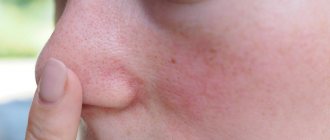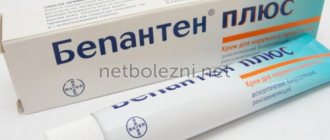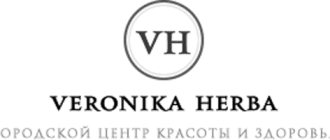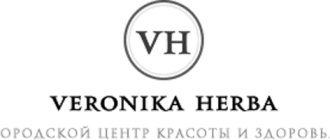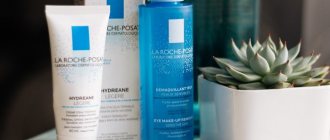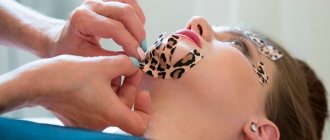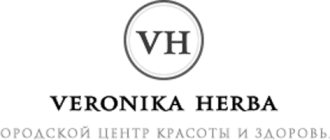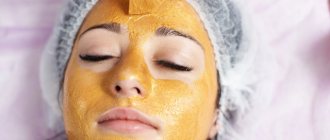Recovery process
Erbium laser is used in cosmetology to eliminate scars on the skin; reviews of the procedure report that rehabilitation lasts no more than two weeks, often the problem area is restored within three days.
There are no serious damage to the skin after the procedure. But there may be redness, swelling, and in rare cases, hematomas.
To speed up the healing process of the skin after laser therapy, cosmetologists advise using “Bepanten” ointment or “D-Panthenol”.
But if there are serious negative consequences, consult a doctor immediately.
Advantages of laser resurfacing:
- This procedure is suitable for any age
- Does not pose a risk of infection
- Effectively rejuvenates the skin and improves its structure
- Leads to smaller pores
- Skin heals quickly after laser resurfacing
- No thermal damage
- No transition boundaries are visible on any part of the skin
- Erbium laser can eliminate previous cosmetic imperfections
- Removes dangerous epidermal cells
- Affordable price
- Suitable for men and women
What is the difference between erbium laser resurfacing and CO2 laser rejuvenation?
CO2 laser rejuvenation is an alternative to the previously described option. This is a deeper and rougher effect on the skin, which has the main advantage of low cost. Carbon dioxide laser is cheaper than erbium laser.
Also, CO2 appeared much earlier, so cosmetologists more often offer treatment using this procedure. It is more difficult to find specialists in the erbium analogue.
But an erbium laser (Erbius, Fraxel, Toplaser, Photona or another) is safe.
CO2 laser resurfacing has a significant drawback in the form of a long rehabilitation process of 3-4 weeks or more.
What does sanding help with?
Polishing corrects age-related changes in the skin, normalizes oiliness and helps eliminate post-inflammatory processes. The laser beam promotes the production of collagen and elastin. At the same time, small wrinkles and traces of ultraviolet exposure are removed.
Erbium laser resurfacing also helps:
- Narrow pores, make the skin elastic and less loose;
- Remove scars and stretch marks;
- Get rid of acne scars.
After this treatment, the skin rejuvenates, becomes healthy, and acquires a silky and even tone.
Which laser rejuvenation method is better?
The doctor decides which laser rejuvenation method is right for you during a consultation. We must remember that everything is individual! There is no method that will suit everyone. Plus there are a number of nuances and limitations. In any case, CO2 and erbium lasers are two excellent options for rejuvenation.
CO2 laser is a deep impact with a long rehabilitation period. But the erbium laser acts more superficially. Therefore, therapy is carried out at a depth of only 1 micron, which allows the cosmetologist to vaporize a thin layer without exposing the main part of the skin to thermal damage. Because of this, the erbium laser is called “cold”.
Some cosmetologists are confident that the collagen damaged by the CO2 laser, which precisely contributes to the rejuvenating effect, shows results after the second procedure.
The main disadvantage of the CO2 laser is gross damage. When it comes to protecting your skin from serious blemishes during treatment, there is nothing better than resurfacing.
It has been proven that exposure to the skin with an erbium laser can reduce the period of epithelization, and complications practically do not arise.
It is important for clients of beauty clinics to remain beautiful, so CO2 clearly loses when it comes to rejuvenation. It cannot be as gentle as an erbium laser.
For more information on the difference between erbium and CO2 lasers, see the article Erbium laser or CO2 laser: which is better.
Erbium laser resurfacing of face and body skin
Shallow and gentle erbium radiation with a wavelength of 2.94 microns affects a specific area of the skin, instantly heating the moisture contained within its cells, causing water to evaporate and displacing existing impurities from the pores. In the upper part of the epidermis, heating increases pressure, which separates dead skin particles, thereby provoking the growth of new, healthy cells. This is also facilitated by almost complete cleansing of the skin, because clogged pores interfered with the start of the regeneration process, and freed from impurities, it allows the body to begin natural cell renewal.
What procedures is the erbium laser used for?
As mentioned above, the erbium laser is mainly used for delicate resurfacing of the face and body to rejuvenate and improve skin health. However, its capabilities are not limited to this. Here are a few other problems that erbium is very effective at addressing.
- Wrinkles. Superficial and deep, in different areas of the skin, including around the eyes and mouth, where the skin is extremely sensitive.
- Acne and post-acne.
- Scars and scars of various origins.
- Hyperpigmentation and tattoos.
- Flabbiness and stretch marks of the skin.
- Small warts and other benign skin growths.
Who is not recommended for erbium laser procedures?
Despite the delicacy of the effect of erbium laser on the skin, for some categories of people its use for laser resurfacing of the face and body is extremely undesirable. These include patients with the following problems:
- inflammatory processes on the skin;
- erythema;
- herpetic rashes;
- weak regenerative ability of tissues;
- pigment deficiency or hyperpigmentation of the skin;
- diabetes;
- hyperfunction of the thyroid gland;
- acute colds and chronic diseases;
- period of pregnancy and lactation.
How is the procedure performed?
Facial resurfacing with an erbium laser is carried out in several stages. First, the skin is prepared for the procedure, cleaned and treated with an antiseptic composition. An anesthetic is then applied. When the anesthetic begins to act - as a rule, this happens 10-20 minutes after application - the procedure itself begins. Both the specialist and the patient must wear dark glasses to protect the retina from laser radiation. Depending on the area being treated and the type of procedure, the time it takes varies from 10-15 minutes to one and a half hours. After finishing the grinding, the skin on the treated areas turns red and the patient may experience a slight burning sensation. To reduce discomfort and protect the skin from possible infection, special products with a healing effect are used.
When the effect of the procedure becomes noticeable
Erbium laser facial resurfacing for skin rejuvenation does not provide an immediate effect. On the contrary, slight redness and slight swelling may be noticeable for several days. And this is a normal phenomenon that you should not be afraid of. The laser triggers natural regeneration processes, and the body must work on cell renewal on its own for some time. The first results, as a rule, become noticeable after about 7-10 days, and you will be able to fully evaluate the effectiveness of this delicate procedure in about a month.
Contraindications to laser facial rejuvenation
The main contraindications for facial rejuvenation with laser equipment:
- Lactation period;
- Pregnancy;
- Malignant tumors;
- Chronic inflammatory processes;
- Herpes in the active stage;
- Poor blood clotting;
- Epilepsy attacks;
- Violation of the integrity of the skin in the projection of work;
- Mental disorders;
- Tan acquired less than 14 days ago;
- Immunodeficiency syndrome.
You can find out how pressing a problem for a patient can interfere with the laser procedure at an initial appointment at a cosmetology center.
The specialist will tell you about the risks or immediately offer an alternative, which includes facial contouring.
Contraindications for laser skin resurfacing
Laser resurfacing surgery is not recommended for people who:
- Diabetes
- Herpes inflammation
- Pregnancy
- Tuberculosis
- Epilepsy
- Some chronic diseases
- Laser treatment is not recommended during PMS or if the skin is sensitive.
It is best to carry out laser resurfacing on the face in winter or autumn, a period when exposure to sunlight is harmless. Then the cells renew themselves faster. The patient may also have other individual contraindications, and in order to avoid complications, you must first consult with our specialist.
Formation of fractional columns
CO2 lasers have low pulse energy and are capable of punching only one fractional hole at a time. To achieve an acceptable depth, several pulses (“stacks”) are used at one point. The only method of fractional work suitable for a CO2 laser is scanning, when a special device - a scanner - automatically moves the beam, forming hole after hole.
The situation is fundamentally different for erbium ER:YAG lasers!
The pulse energy of erbium lasers is an order of magnitude greater than that of CO2, and it becomes possible to form many holes simultaneously.
To do this, the laser beam is split into many microbeams using special optics. The FS01 handpiece of the Fotona erbium laser simultaneously forms 81 microholes. It will also take several pulses to achieve the desired depth. This technique is called “stamping”, it is very fast, but is only applicable to erbium lasers.
The stamping technique is fast, but not deep. The depth of fractional stamping is quite sufficient for rejuvenating procedures, but, in some cases, the formation of deeper fractional holes is required.
The “erbium” solution to this issue is very simple - you need to concentrate a lot of the energy of a powerful laser on one fractional hole using scanning technology.
In 2010, Fotona released the ER:YAG + ND:YAG laser SP Dynamis, which supported the F-runner F22 erbium fractional scanner.
The laser developers decided that concentrating the pulse energy of such a powerful laser on one hole was too much, and they developed a scanner that simultaneously forms not one, but four microholes. Other technical characteristics of the F22 scanner are also impressive, and are unlikely to be covered by anyone in the near future.
When operating in the maximum ablative mode, the scanner provides a microzone fluence of up to 3000 J/cm2, which corresponds to an ablation column depth of approximately 12 mm. There are currently no medical techniques that require fractionation to such a depth. The maximum practically applicable depth of fractional work on scars is 4-5 mm, which is not particularly difficult for a combination of the Fotona erbium laser and the Fotona F22 scanner.
As already mentioned, factional technologies are not a panacea. For example, when forming fractional holes, it is impossible to directly level or sand the surface of the fabric. The key to the solution is a combination of planar and fractional techniques, which is only possible with an erbium ER:YAG laser.
Trend: the patient himself chooses the option to solve the problem - from a course of non-invasive/minimally invasive procedures to aggressive one-time procedures.
Erbium ER:YAG laser with Smooth technology allows you to choose from a non-ablative Smooth course procedure to an extremely aggressive and effective laser resurfacing procedure. The range of techniques is further expanded with the presence of an ND:YAG laser, which is synergistically combined with erbium. A counterexample is CO2 lasers - treatment of all diseases with one tablet (fractional ablative-coagulation procedure).
Trend: the procedure should combine maximum effectiveness with minimal invasiveness.
Erbium solution – fractional techniques in those areas of the face/body where their effectiveness will be sufficient (fine wrinkles, etc.). Local planar work, where necessary.
Counterexample: CO2 lasers only work fractionally.
Trend: the ideal procedure - without rehabilitation, instant lifting, “get up and go”, the maximum possible effect, preferably after the first procedure.
To achieve this effect, a multi-level effect on the tissue is necessary (on the upper layers and deep layers of the skin). The intensity of impact at each level should not lead to the need for rehabilitation.
We immediately reject fractional ablative techniques - they leave a “mesh” on the surface of the facial skin. Since the CO2 laser can only operate in fractional ablative-coagulation mode, the method is not suitable for such procedures at all.


